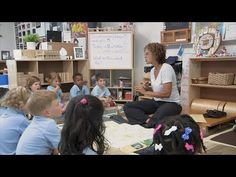Voice care is an essential, but often overlooked, aspect of a teacher’s health and professional practice. Teachers are among the most common occupational groups at risk for developing voice disorders due to the continuous strain placed on their vocal cords. With the nature of their work requiring prolonged periods of speaking often in noisy environments without amplification, teachers need to be particularly vigilant about voice care.
Maintaining vocal health is not merely about having a pleasant-sounding voice; it is about ensuring that communication within the classroom remains clear and effective. Voice problems can lead to missed days of work, reduced teaching effectiveness, and a lower quality of life.
Several strategies can help safeguard a teacher’s voice. Here are some key considerations for voice care:
1.Hydration: Keeping the vocal cords hydrated is crucial. Teachers should drink plenty of water throughout the day to keep their throat moist and reduce the risk of vocal fatigue.
2.Vocal Warm-Ups: Just like athletes warm up before competition, teachers can benefit from light vocal exercises before starting their teaching sessions. Humming or gentle trilling can help warm up the voice and prepare the vocal cords for the heavy use ahead.
3.Appropriate Volume and Pitch: Using an appropriate volume level without shouting helps prevent strain. Teachers should also avoid speaking at a pitch that is too high or too low, as this may place additional stress on the vocal cords.
4.Microphones and Amplifiers: When available, teachers should use microphones or other amplification systems to ease the strain on their voices, especially when addressing large classes or noisy environments.
5.Rest Your Voice: Silence is golden for vocal recovery. Teachers should aim to give their voices periodic breaks during the day and should rest them as much as possible outside of school hours to recover from strain.
6.Vocal Health Education: Educators should be informed about proper voice technique and signs of voice fatigue or damage so they can seek early intervention from specialists like speech-language pathologists if problems arise.
7.Avoid Adverse Conditions: Smoking, excessive caffeine or alcohol consumption, and exposure to irritants such as chalk dust or air pollution can be detrimental to vocal health. A clean, smoke-free environment with good air quality can help maintain a healthy voice.
In conclusion, teachers’ voices are vital tools in delivering education and fostering a learning environment. By taking proactive steps in caring for their voices, teachers protect one of their most valuable professional assets, ensuring that they can communicate effectively in classrooms for years to come.











